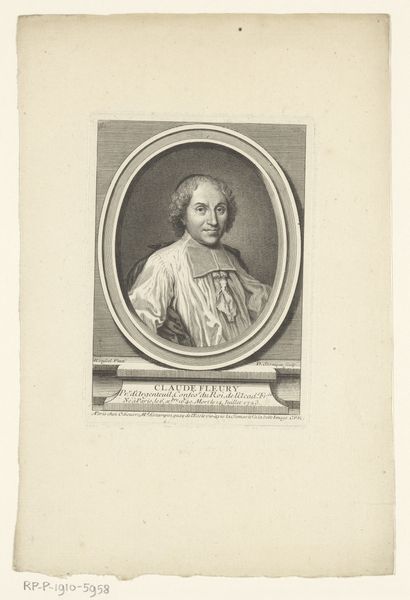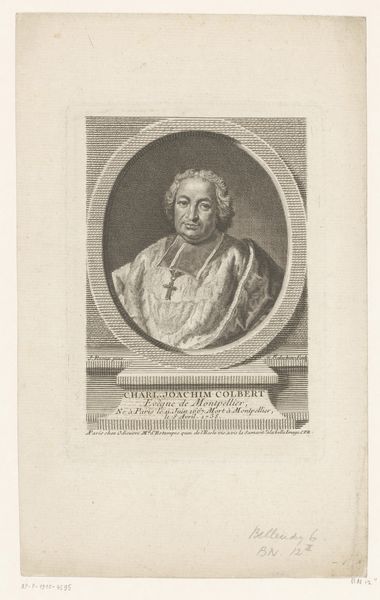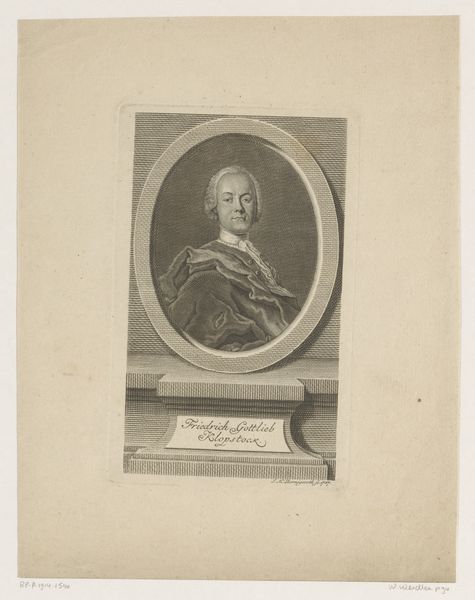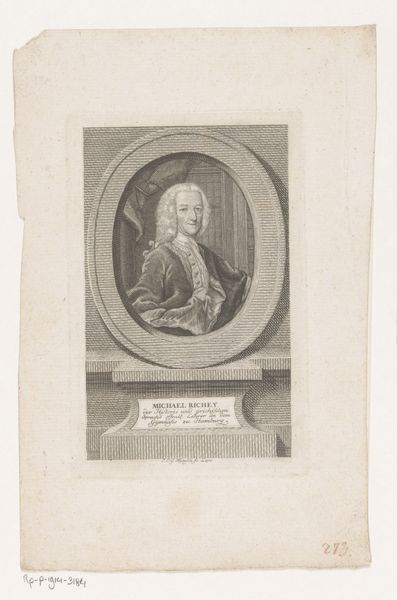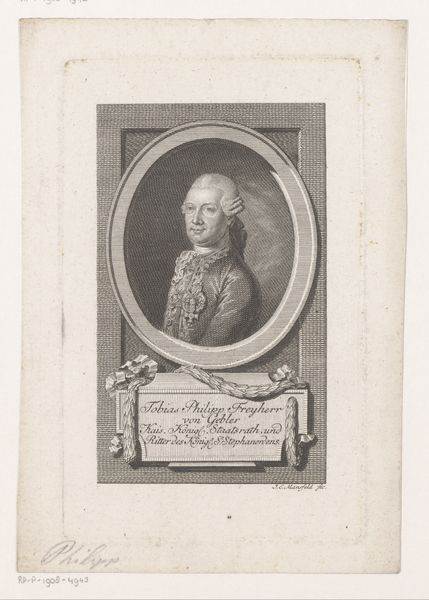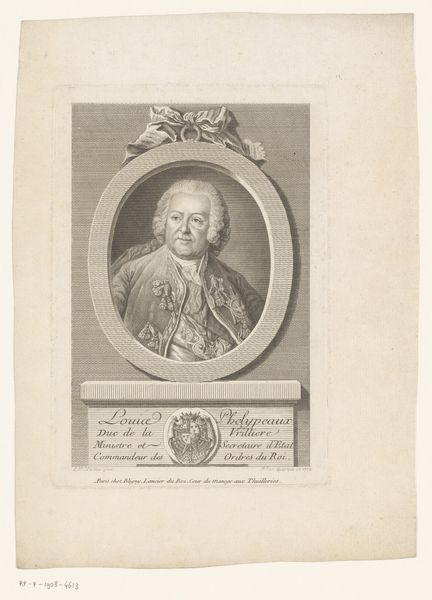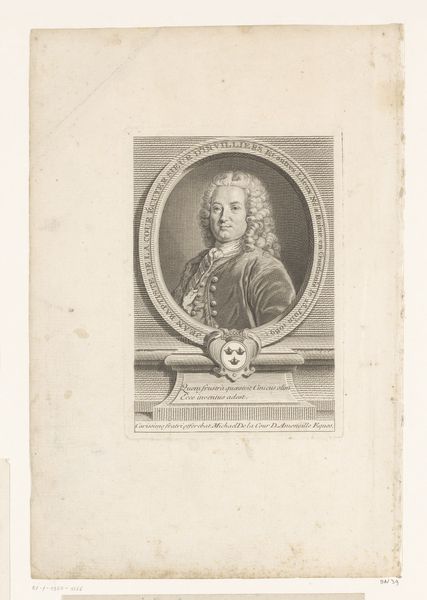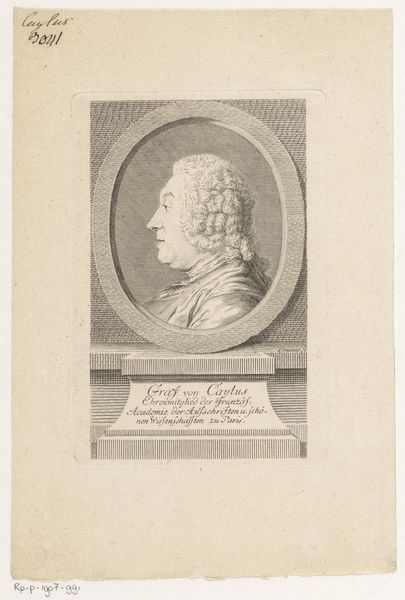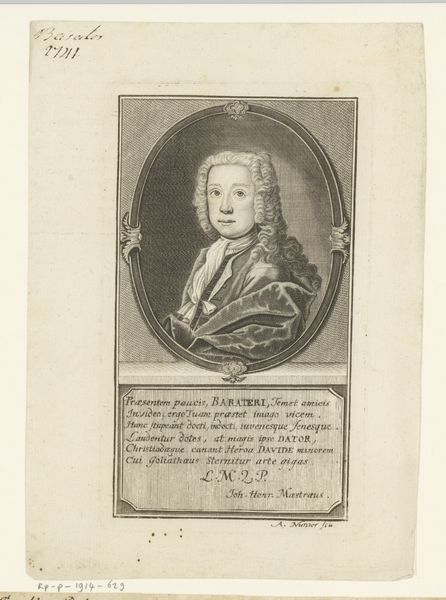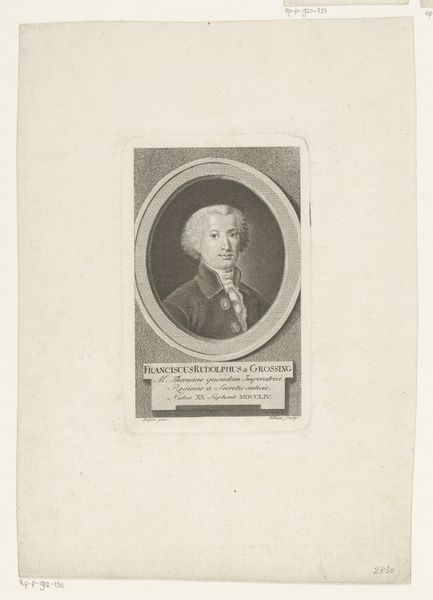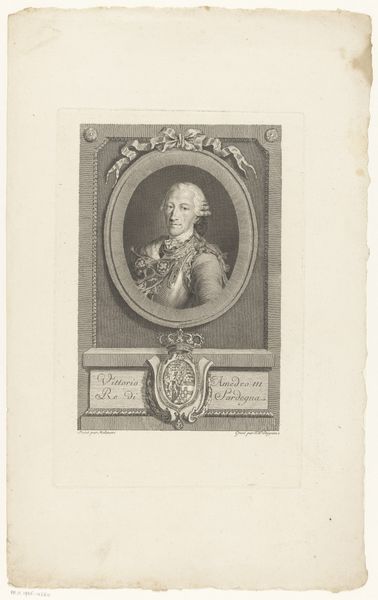
Dimensions: height 157 mm, width 112 mm
Copyright: Rijks Museum: Open Domain
Editor: So, here we have “Portrait of Claude de Forbin,” an engraving dating roughly from 1747 to 1837, housed in the Rijksmuseum. I’m immediately drawn to the sitter's confident expression and the way the oval frame mimics a classical medallion. How would you interpret this portrait, focusing on its symbolism? Curator: The portrait offers us a fascinating glimpse into how identity and power were constructed and perceived during this period. Consider Forbin’s armor: what does that evoke for you? Editor: Initially, I'd say it communicates military prowess and aristocratic status, obviously. Curator: Exactly, and beyond the immediately apparent, think about the long and potent association of armor with heroes, and even saints, across different epochs. Its enduring symbolic meaning represents the protection of not only the body, but of virtues and beliefs, something steadfast and resistant to corruption. How might Forbin's status and this symbolism connect? Editor: Well, Forbin was an important figure, apparently "Grand Admiral" during his lifetime. It suggests he wanted to be remembered for posterity, a protector of France, perhaps? Curator: Precisely! Engravings like this, reproduced and distributed widely, helped cement those narratives and influence collective memory. Each element, from the armor to the frame, carefully builds upon the image he wanted to project. Also consider that oval, a vesica piscis... Does that invoke anything beyond a common picture frame? Editor: Is that a halo reference I'm detecting, turning him almost into a saintly figure? Very interesting… I never considered engravings being so loaded. Curator: It's an example of how even seemingly straightforward images can carry deep, culturally ingrained meanings. Reflecting upon that unlocks rich insights into the artwork itself and also the era it represents.
Comments
No comments
Be the first to comment and join the conversation on the ultimate creative platform.

